with Wayne and Andrew
Wayne and Andrew fight on the beaches of Normandy.
Join the Battlefront team as we launch Bagration: Soviet
with Wayne and Andrew
Wayne and Andrew fight on the beaches of Normandy.
with Andrew Haught
The 29th Boat Assault Company have been near and dear to my heart since they first arrived years ago in the Bloody Omaha book, at that time I leaned heavily into numbers over elite units so it was an easy choice for me between the 29th and the Big Red One.
The US Assault Company is a unique Infantry company that has a mix of specialty weapons from Bazookas to Flame-Throwers, this unit has a weapon for every occasion. Along with this unique composition you have access to lots and lots of units in one formation. Having access to six core infantry units is a key aspect of this list.
Before getting into the list let’s look at what you get in a unit. For nine points you get:
5x M1 Grand Rifle Teams
2x M1 Bazooka Teams
1x 60mm Mortoar
1x Flame Thrower
As a bonus you can replace one of your Bazookas with M1919 LMG at no cost.
The version of the Assault Company I am running are Confident, Trained, and Aggressive. They also come with the Blood n’ Guts trait that gives them a 3+ to rally, that will keep my units moving forward. I could go with the Big Red One elite option, but the 29th is who I want to play. Since I am going for the cheaper version that is easier to hit, it is important then to make sure I have the numbers to absorb losses more easily.
To this end I am going to take 5 units of the Assault Boat Sections, adding in the HQ and M1917 Machine Gun platoon that gives me an even 50 points. I am choosing to leave the 2 Bazookas in each unit instead swapping any for the LMGs. I don’t think those units need the rate of fire since I am going to run two units of the Support Boat sections with the M1917 Machine Gun platoon for 5 points a unit, and I have a unit of M1917 guns. Adding in those units brings me up to an even 60 points.
Next I want to add some artillery; this will be simple as I already have loads of small one gun templates, so adding a full strength mortar platoon for 6 points would be ideal.
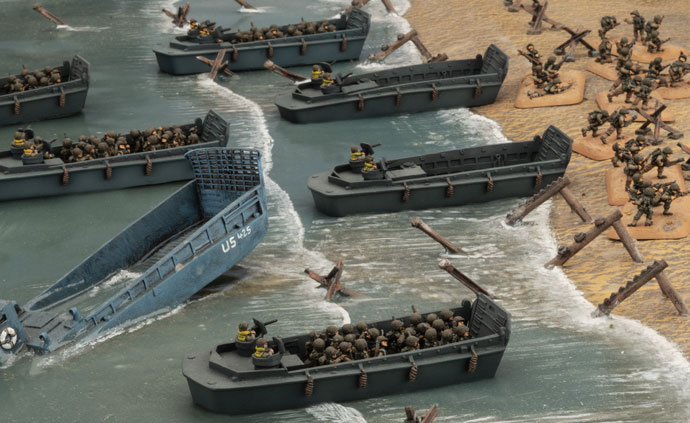
Now the list has some Achilles heels, I have no dedicated anti-air units so air-power can be quite effective against me. I am also weak against light tank lists, like a Stuart company. At a 100 points you can get 50 of them and at those numbers they will swamp me, my M10s don’t have enough shots to kill them all and the Stuarts AT is high enough to kill an M10 even when hitting front armour. But no list can cover all the bases and even against light tanks and air-power I will have a fighting chance, as I do still have loads of bazookas and my M10s have self-defence AA.
So here is my final list
Assault Company (66 points)
M10 Tank Destroyer Company (34 Points)
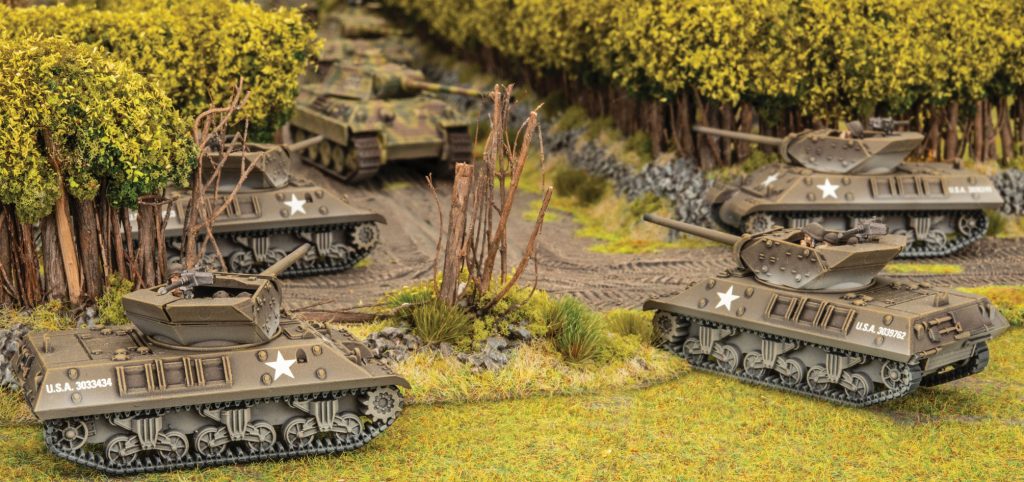
As a list this works really well- it’s easy to split it up when figuring out reserves and it is flexible with the ability to both attack and defend quite well. On the defence you place one Assault Boat Section and Support Boat Section on each objective, freeing the rest of your force to be placed in such a way that they can delay and assault the incoming enemy models. On the attack I would focus one objective, soften it up with the loads of artillery templates this list has and band all my infantry together and swarm the weakened objective. I will use my HMG and tanks to threaten any reinforcements to the attacked objective while also proving much needed fire support to my main attack.
Well, I hope this gives you an idea of how you want to build your beach landing company. Perhaps you want better quality of troops instead of numbers by swapping out the 29th with Big Red One, or maybe you do have a Stuart player in your area and you want Shermans instead of M10s. I highly suggest tweaking your lists to fit your local m eta and your playstyle.
Well that’s it until my next List Tech, hope to see you on the battlefield.
The Auckland Studio
Andrew is rebasing his Beach Assault Sections to add some fresh sand to the base and pop those flamethrowers on small bases.
Mike has come to join us for the launch and is touching up some proper big boy guns.
Patch, happy as ever, is setting up the lighting to record a throw down between Phil and Chris…
with Evan Allen
Nothing seems to cause as much confusion as colours of the uniforms worn by the United States Army during WWII. And this seems to be mainly due to the fact that the army entered the war in December 1941 wearing one uniform and finished the war in 1945 with another uniform, mixed them up in between, with a few other articles of clothing thrown in for good measure!
In this article I will attempt to portray these uniforms with pictures of BF miniatures painted with Vallejo’s Acrylics colours that I’ve personally chosen. So please treat all colour suggestions as a guide and not a decree. Also, I’ve purposely avoided one step in the painting process that I
normally use which is highlighting of the base colour. This is so you can see the original colour from the bottle and not just the highlighting I use,
which is add 10-15% VP Deck Tan (986) to the original base colour. For those that don’t use the
Vallejo range just cross-reference the
colours on the FOW colour chart to get your favourite paint brand equivalent. Throughout this article I’m going to use the designations that seem to be most commonly used to describe the uniforms and not necessarily the ‘official’ nomenclature.
7 December 1941. The United States is dragged forcibly into the war and the first US soldiers to see combat in the ETO, or ‘European Theatre of Operations’, land in Tunisia on 8 November 1942 during Operation Torch.
This figure is shown
wearing the M1941 or ‘Parsons’ jacket and Olive Drab woolen trousers with canvas leggings and M1 steel helmet. The G.I. in this uniform could be found in the Bocage hedgerows of Normandy to the snow-covered Ardennes, from the dusty Tunisian roads to the hills of Italy and anywhere else that a G.I. fought in the ETO.
| Uniform Part | Vallejo Colour |
| Jacket/leggings | Khaki (988) |
| Trousers | US Field Drab (873) |
| Webbing | Green Grey (886) |
| Helmet | Olive Drab (887) |
| Boots | Flat Brown (984) |
One uniform Item that can cause confusion is the HBT or ‘Herringbone Twill’ denim fatigue that the US Army issued. These were worn as working clothes during training etc. but were also worn over the top of the normal combat dress for amphibious operations such as the Tunisian
and Normandy landings. The olive green colour of the HBT’s was similar to the colour of the later M1943 uniform, which we’ll look at later.
These two figures (Above and left) show a mixture of HBT shirt and trousers mixed with the OD woolen trousers and M1941 jacket. Again, this would be a common mix anywhere the G.I. fought.
| Uniform Part | Vallejo Colour |
| Herringbone Twill | US Dark Green (893) |
(Note. To differentiate between HBT and the M1943 uniform I’d suggest adding more Deck Tan to the highlight colour for the HBT material)
To add to the figure with the Herringbone twill trouser choice is the additional items issued for the Normandy landings. These consisted of the Assault jacket, worn over the normal jacket, and the waterproof gasmask bag. The Assault jackets had extra pockets for things like grenades
and ammo magazines that wouldn’t hinder the troops onto the beaches . The Gasmask bags, well just because, who knew what the Germans would do under such pressure?
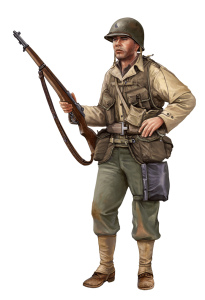
| Uniform Item | Vallejo Colour |
| Assault jacket | Vallejo Olive Drab (887) |
| Gasmask bag | German Grey (995) |
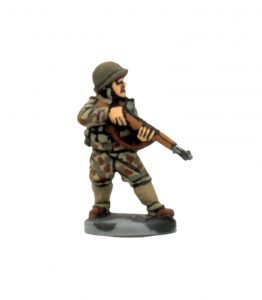
a result of the confusion. But this does make for an interesting looking G.I.
This camouflage uniform was basically the HBT uniform printed in a camouflage pattern.
| Uniform Part | Vallejo Colour |
| Uniform Base | Khaki (988) |
| Camo. | Flat Brown (984) |
| Camo. | US Dark Green (893) |
| Leggings | Khaki (988) |
| Webbing | Green Grey (886) |
A trick I’ve learnt with camouflage uniform painting is once you’ve finished the pattern then go over the whole figure with a light dry brush of the original base colour. This should help blend in the pattern and prevent it from being to ‘loud’.
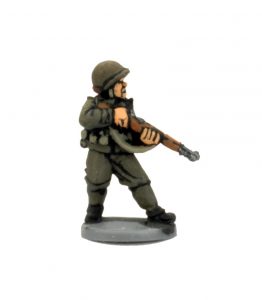
The first issue was to the G.I.’s taking part in the Anzio landings in Italy and the new uniform proved itself an immediate success. Due to internal squabbling however, between the ETO command and the U.S. based command the issue of this much improved uniform was delayed until pretty much the end of the war for the troops already serving there. Most new troop formations that were shipped to the ETO after mid 1944 were wearing the new uniform but the rest had to soldier on through one of Europe’s worst winters wearing the older and less weather resistant uniform. With the new uniform also came ‘Shoe Pac’ which were an attempt to make the G.I.’s boots waterproof. They were a rubber and canvas overshoe that slipped over the boot and had metal clips to tighten. They were black in colour.
| Uniform Part | Vallejo Colour |
| M1943 uniform | US Dark Green (893) |
| Shoepacs | German Grey (995) |
| Webbing | Green Grey (886) |
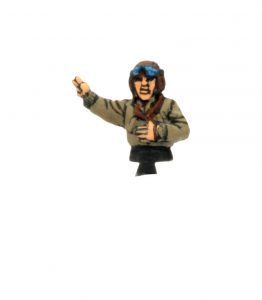
| Uniform Item | Vallejo Colour |
| Windcheater | Khaki (988) |
| Helmet | Flat Brown (984) |
The standard U.S helmet became popular with tank crews as the M1942 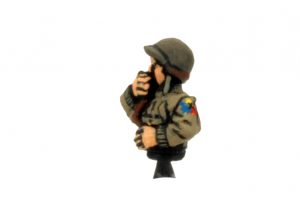
| Uniform Part | Vallejo Colour |
| Helmet | Olive Drab (887) |
| Jacket | Khaki (988) |
Contrary to popular belief, if you’ve chosen an American force, you have a wide selection of paint schemes to choose from. Be it a ‘Gypsy’ mixture for a veteran unit or ‘uniform’ appearance for a freshly landed bunch of Greenhorns enjoy your painting and gaming.
Pete the Wargamer shows you a great method of painting the M5 Stuart for Normandy…
with Phil Yates
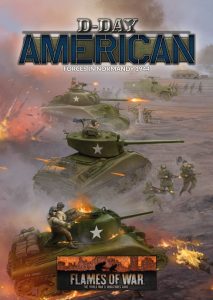
This gives an American commander a wide choice of forces, even though their equipment was standardised to maximise the benefits of Americsn-style mass production. Do you want to field fresh, eager troops, available in significant numbers, or do you want to field the less common desert veterans. Are you content with regular army troops, or do you want a small, elite strike force?
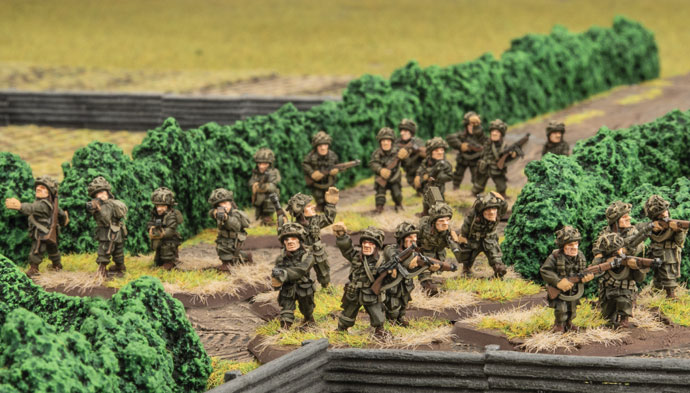 Glider Rifle Company
Glider Rifle Company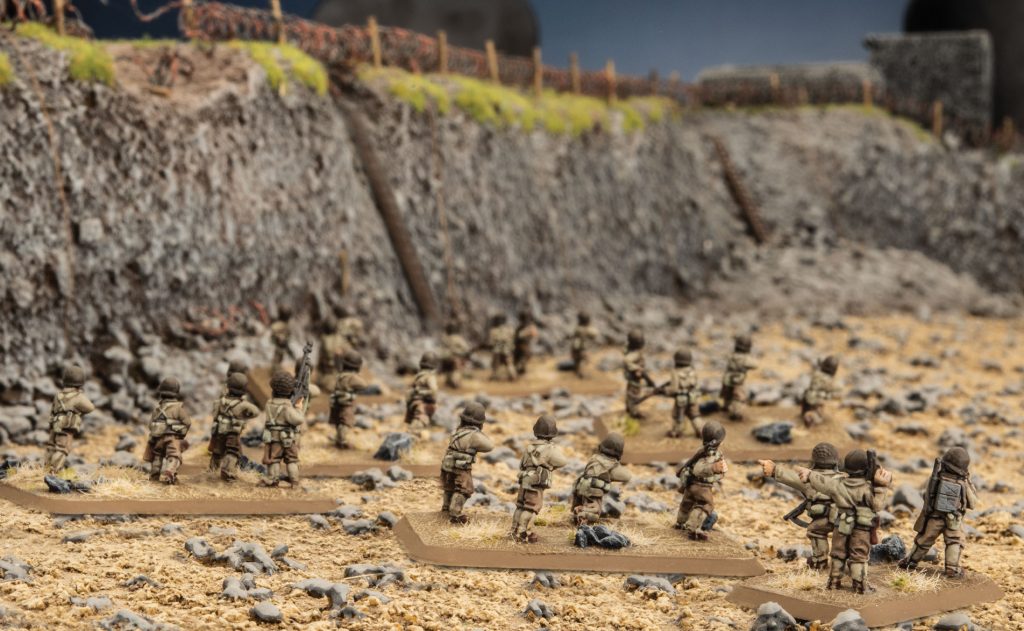 Assault Company & Veteran Assault Company
Assault Company & Veteran Assault Company Rifle Company & Veteran Rifle Company
Rifle Company & Veteran Rifle Company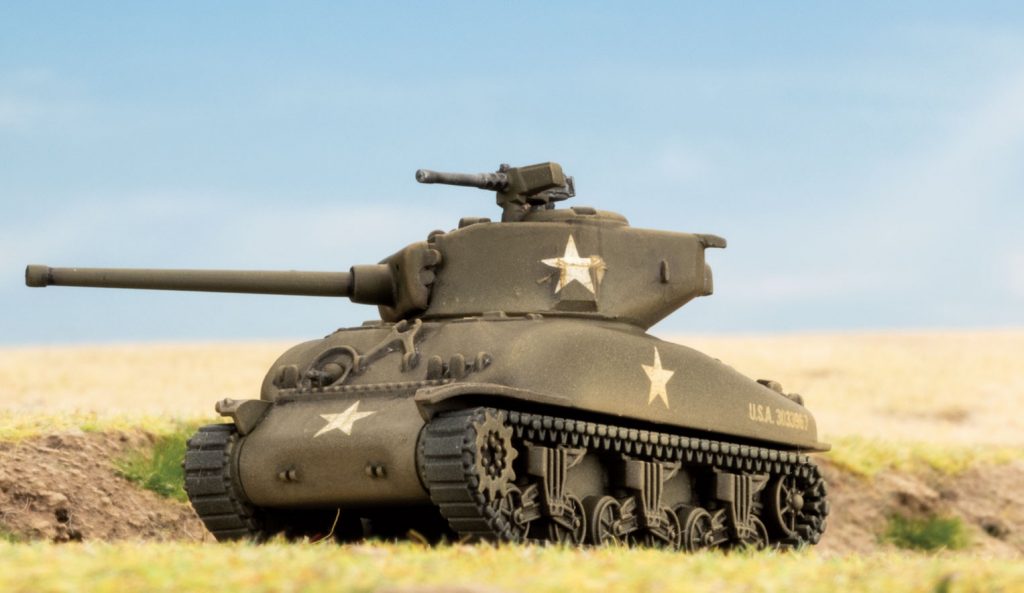 M5 Stuart Tank Company & Veteran M5 Stuart Tank Company
M5 Stuart Tank Company & Veteran M5 Stuart Tank Company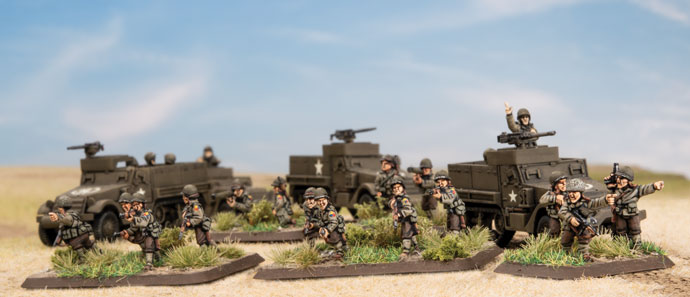 M10 Tank Destroyer Company
M10 Tank Destroyer Company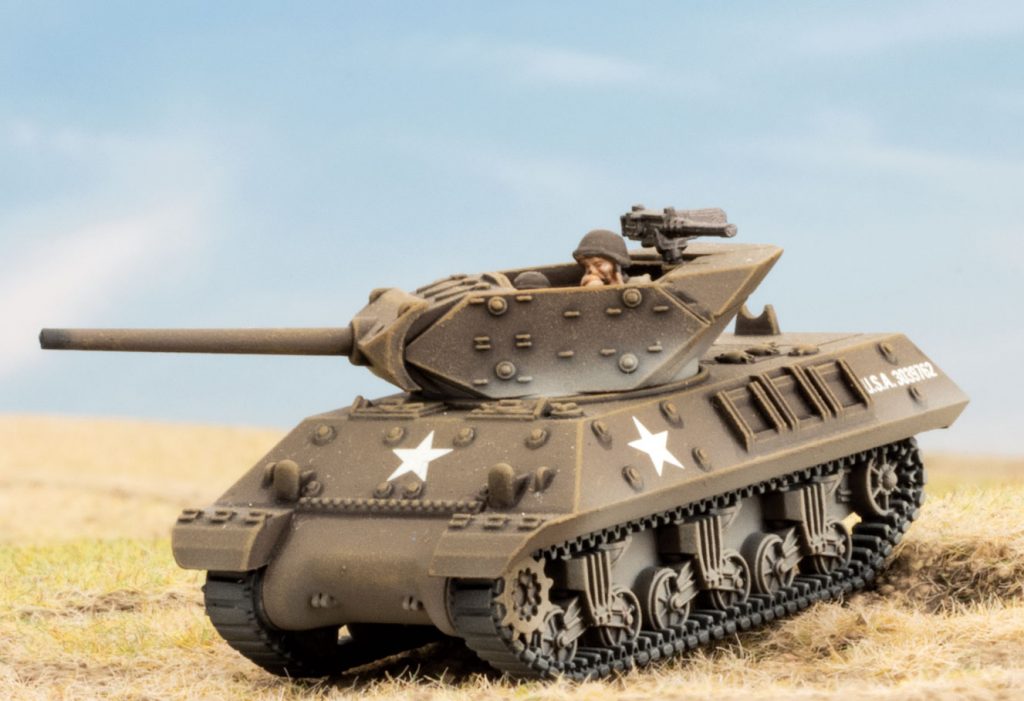 Support
SupportThe Americans have three basic varieties of troops in D-Day: American. You can field elite paratroopers and rangers, regular troops fresh into battle, or experienced veterans. Each of these has a different play style.
The elite paratroopers of the parachute rifle company are a new experience for American players. They are some of the best infantry in the game, being rated as Fearless, Veteran, and Careful. On their own, they need to be aggressive as they don’t have the long-range firepower to stop the enemy from sitting back and picking them off, but used this way they can be hard to stop. Given tank-destroyer and artillery backup, they also make excellent defensive troops, so you can swing either way.
The other elite option, the rangers, are more assault oriented, being Aggressive, so easier to hit, and rallying and hitting in assaults on 2+. If you sit around, you’ll get shot to pieces, but if you go for it, the rangers are hard to stop without killing every last one of them!
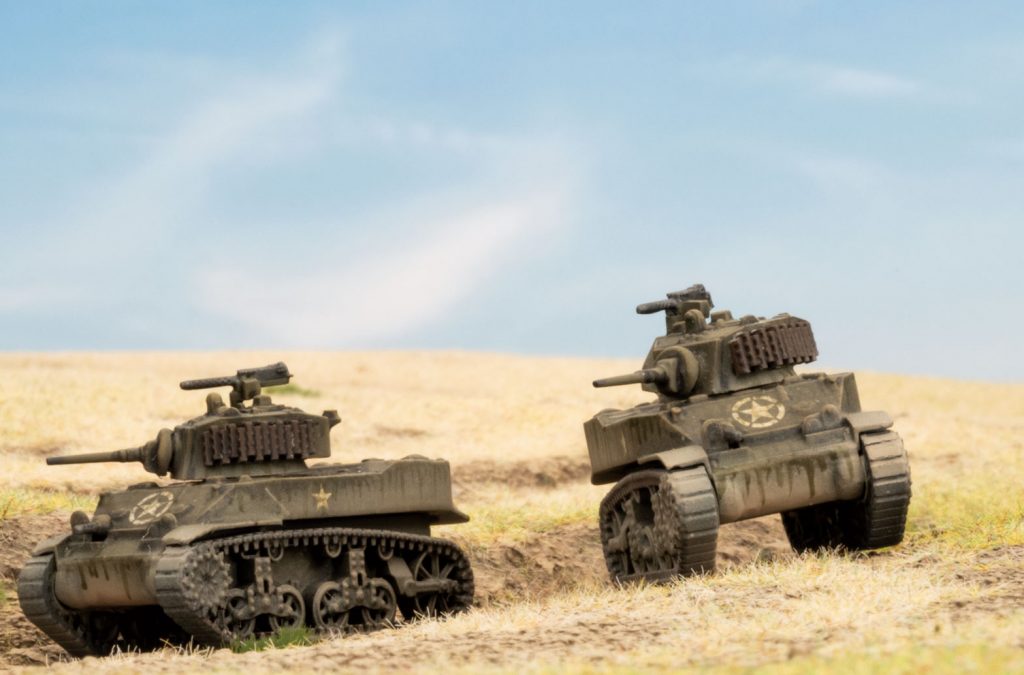
The veteran formations have learned what works and what doesn’t, so are rated as Careful, making them harder to hit, and have ‘Yankee Ingenuity’ pushing their tactics up to 3+. Of course, they’re no longer so ‘Blood and Gusts’ as the green guys. Their skill allows them to match the best, but they are more expensive in points, so your force is smaller, so tactics need to be more cautious.
The American strategy can be summarized in the phrase mobile tactics. They win by using their mobility, their ability to fire on the move, and their numbers to outflank their opponents and keep them off balance, while applying massed firepower to overwhelm any opposition.
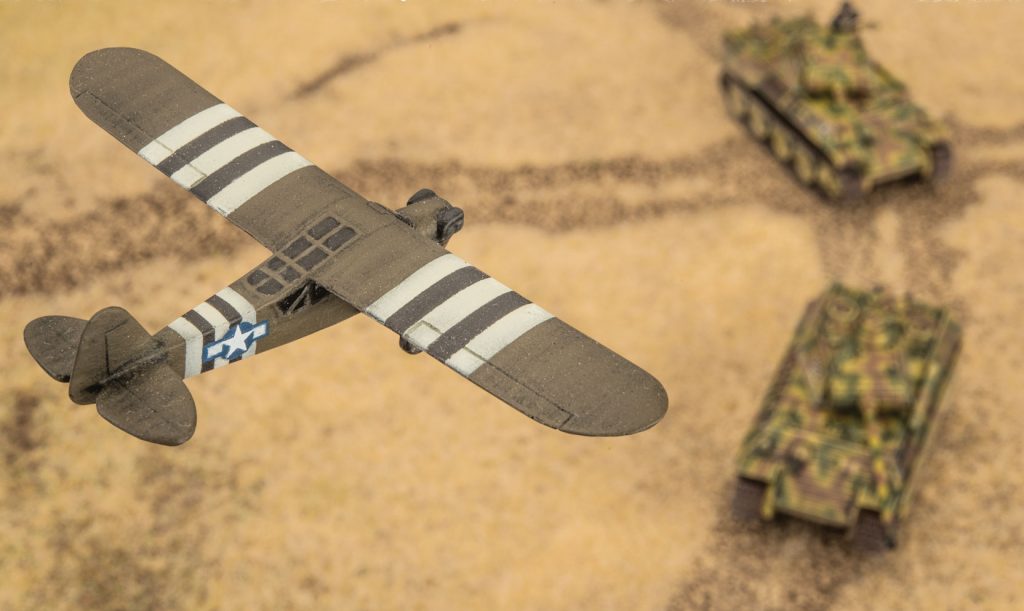
D-Day: American includes three new missions and a linked campaign. The first mission is Shot in the Dark, an airborne assault gone wrong with the attackers scattered across the board (and possibly off it) while the defenders attempt to organise a defence in the dark before the attackers reform and overwhelm them. It uses simple rules to reflect the chaos and uncertainty of airborne assaults.
The second mission is Help Is On Its Way, a refight of the Rangers’ battle at Pointe du Hoc. This mission uses the amphibious assault rules to bring the attacking forces ashore. A shortage of landing craft forces the attackers to land in multiple waves, which tanks to the attacker’s Overwhelming Force rule may include units from previous waves that have already been destroyed. The defenders have bunkers, nests, minefields, and barbed wire to delay the attack, while both sides hope desperately for assistance from a rescue force coming from inland.
The third mission is FUBAR (an acronym for Fouled Up Beyond All Recognition) which allows you to refight the bloody battles on Omaha Beach. This uses the same amphibious assault rules, but is a much more straightforward frontal assault into heavy defences with victory being determined by how fast, or even if, the American player can capture their objectives.
These three missions are linked together with two standard missions from the rulebook in a simple campaign where the outcome of one battle has an effect on the next. If the American player can make their final breakthrough in the fifth mission, they win the campaign.
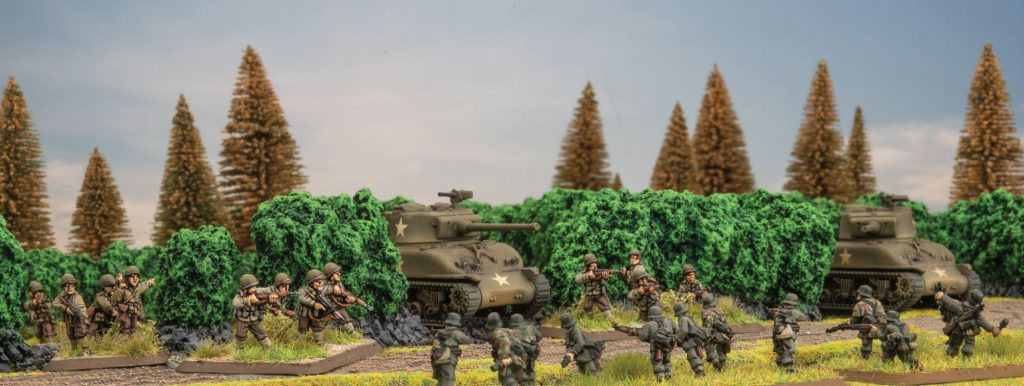
The D-Day: American book has four warriors: Norman ‘Dutch’ Cota, Lafayette Poole, James Earl Rudder, Turner Turnbull.
Norman ‘Dutch’ Cota, famous for leading his troops off Omaha Beach, showing them how an assault should be done, allows infantry under his command to attempt to charge again if they are driven back by defensive fire.
Lafayette Poole, America’s most successful tank ace, is ideal for leading your tanks’ advance. His men will follow him as he dashes forward, then when he gets close, his accuracy while firing on the move us unparalleled.
Turner Turnbull’s paratroopers refused to give up ground, no matter how many times the Germans attacked. His platoon’s defensive fire is virtually impenetrable.
James Earl Rudder led the rangers at Pointe du Hoc, steadfastly counterattacking any German penetrations into the rangers’ defensive positions.
The command cards introduce a new concept, title cards. These cards have the title of a division and a special rule giving the division’s flavour. The key is that you can only have one title in your force.
Title command cards for D-Day: American give you the option to field twelve new infantry divisions in addition to the two in the book. These allow you to customise your rifle company force to fight in many different ways. Some divisions give you new equipment, such as SMG-armed assault groups or M7 Priest assault guns as far of the formation. Others give your troops new abilities like attacking at night, riding tanks, navigating reserves to where they are needed, and improved artillery support. Most of the title cards give your division a different focus, trading out the ‘Blood and Guts’ rally bonus of the ‘yankee Ingenuity’ tactics bonus for other advantages.
Your tankers and armoured infantry aren’t left out, gaining the option to be the Free French ‘Division leClerc’, determined to liberate France or die trying. If they want to stay good ol’ boys from the US of A, they get lots of interesting equipment for their Sherman tanks: DD amphibious gear, Cullins hedgerow cutters, tank telephones, and sandbag armour.
The Americans are known for their love of fire support, and the command cards don’t disappoint, giving naval gunfire support, heavy mortars, air superiority, and new weapons loads for your P47 Thunderbolts including napalm and really big bombs!
If all this firepower seems to blunt to you, you can get all sneaky with the French resistance. They can mess with your enemy’s reserves or fight alongside you on the battlefield! And, when everything else fails, there’s always luck, with the Lucky card giving you a re-roll at the critical moment.
D-Day: American is live on Forces, so you can start putting together a force with which to storm the beaches and liberate France!
D-Day: American is live on Digital- check out everything you need to know about Digital right here…